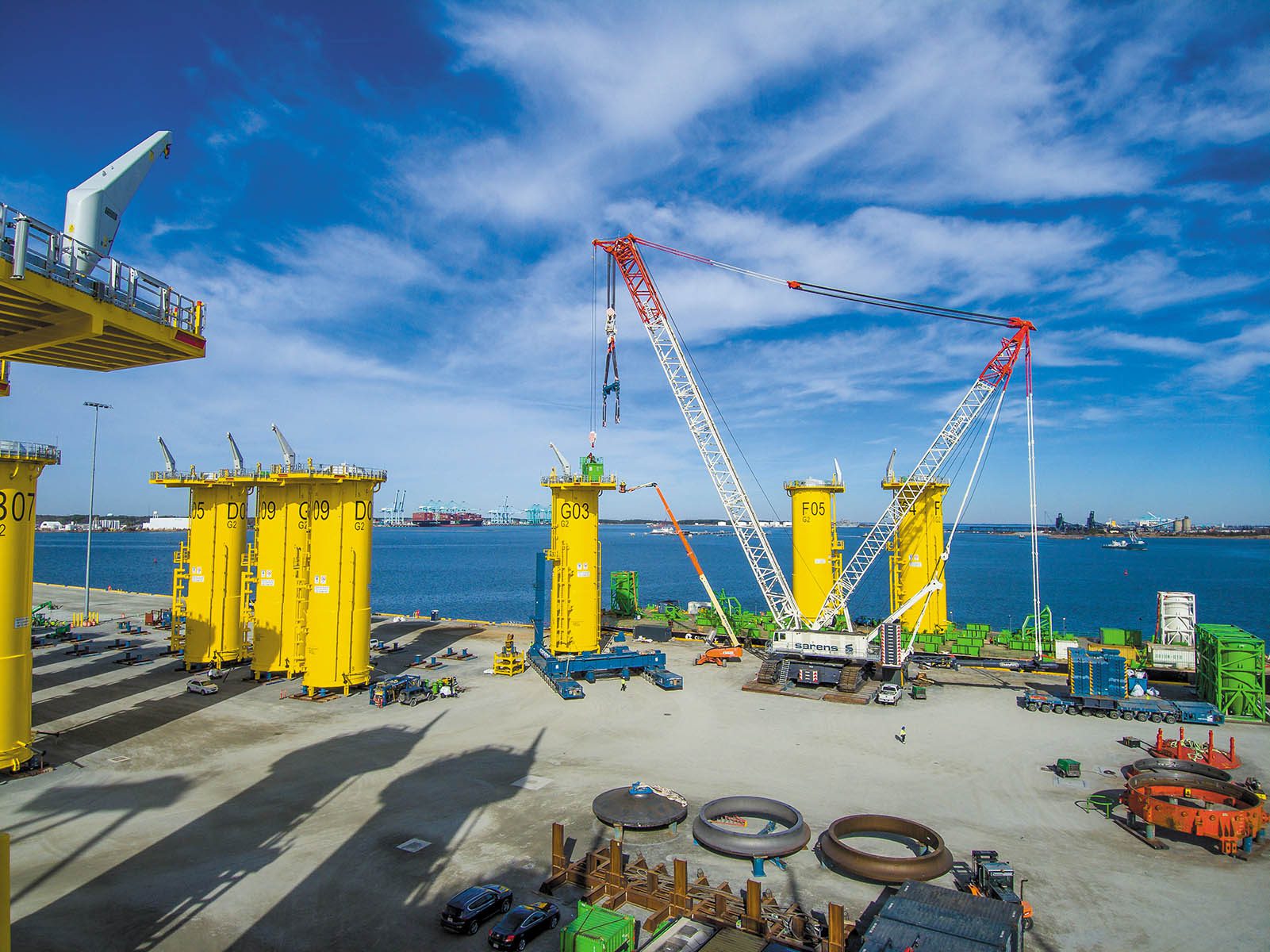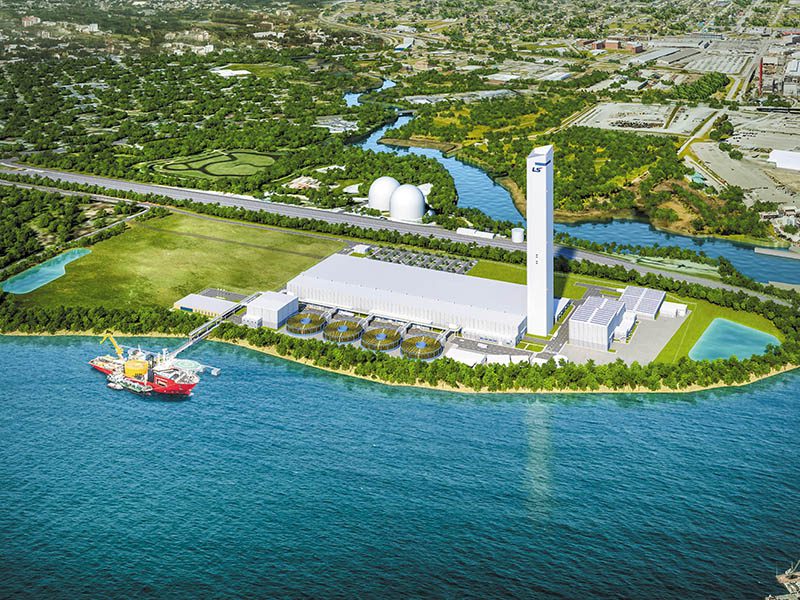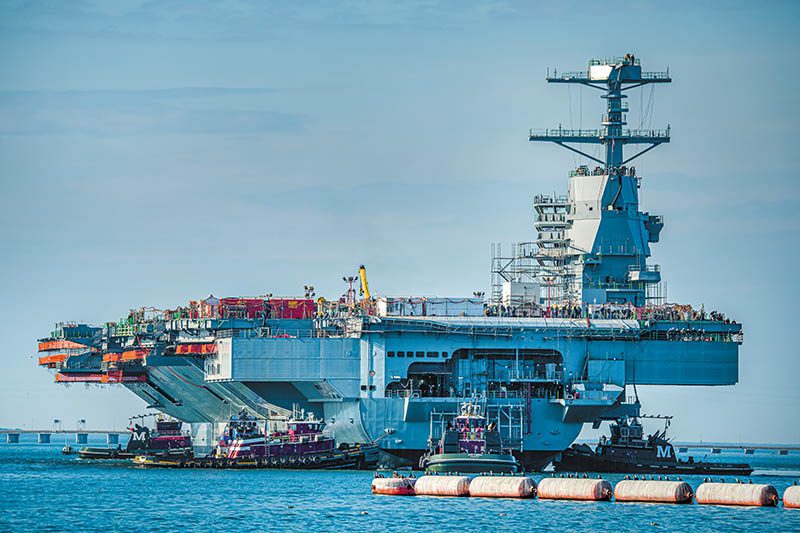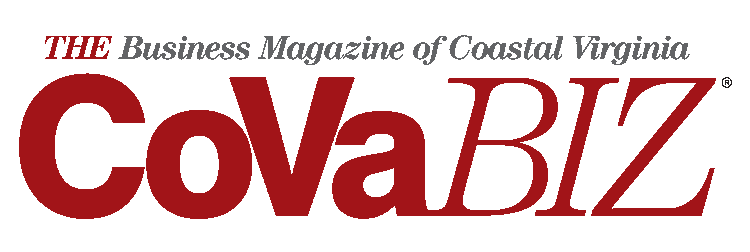by Eric J. Wallace
In just four months, the second Trump administration has enacted sweeping international business and trade policies that have scrambled global economic systems.
Seesawing, often arbitrary tariffs or tariff threats, and actions such as pausing enforcement of the Foreign Corrupt Practices Act (FCPA), which prohibits U.S. individuals and companies from bribing foreign government officials to gain or retain business, has “ushered in a new era of economic nationalism and transactional diplomacy, rattling global markets and destabilizing long-standing trade norms,” writes Council on Foreign Relations Gulf Research Center chief economist, John Sfakianakis, in a recent global memo. “Trump’s sweeping tariff measures—targeting China, the European Union, and key supply chains—have triggered a cascade of protectionist responses and injected fresh uncertainty into global commerce.”
As home to about 200 international companies, the East Coast’s second-largest port by tonnage, the biggest offshore wind project in the nation, and NATO’s North American headquarters, Coastal Virginia business leaders are feeling the anxiety. Yet, Hampton Roads Alliance (HRA) chief business development officer, Jared Chalk, says the region has an insulating “strategic advantage” and is “uniquely positioned” to not only weather the storm, but capitalize on shifting federal spending priorities in the interim.
“Our major strengths are maritime, energy, cybersecurity and defense,” says Chalk. With the Trump administration pushing for $1 trillion in defense spending in 2026 alone and the Virginia Clean Economy Act still in place, and Europe’s intensive drive toward decarbonization, “we see opportunities to diversify within those sectors and [continue to] attract significant investment over the next four years and beyond.”
Let’s take a look at the reach of international investment across Coastal Virginia, explore the projected impacts of select policy changes on existing businesses, and dig into areas that experts like Chalk say are primed for growth.

Cranes in action at the Coastal Virginia offshore wind facility in Portsmouth. Photo courtesy of Dominion Energy
The Bigger Picture
International companies have funneled around $1.4 billion in capital investment and created about 24,000 jobs in the Coastal Virginia region since 2020, says Virginia Economic Development Partnership (VEDP) vice president of marketing, Anita Begnaud.

Planned LS GreenLink facility. Photo courtesy of Portsmouth Economic Development
She and other VEDP team members have helped to steer those dollars and bring businesses into the area. The organization works “24/7, six and a half days a week,” to showcase the “advantages of doing business in Virginia,” says VEDP vice president of foreign direct investment, Antje Abshoff. And in this space, Hampton Roads is a major player.
Virginia has taken the top podium spot on CNBC’s annual America’s Top States for Business rankings list three times in the past five years, says Abshoff. Hampton Roads is at the center of that success as “the literal and figurative gateway for doing business in this state.”
Begnaud points to “a constellation of catalyzing assets” and unparallelled selling points like proximity to Washington D.C., NASA research facilities, the planet’s largest concentration of data centers, the Port of Virginia, a huge and high-level military presence and the fact that 70% of global internet traffic passes through the region.
“You can talk about quality of life, talk about airports, but when we lean into the actual strengths of an area, Coastal Virginia has a portfolio that is uniquely attractive from a global prospective,” says Begnaud. When you dig in, “companies see the light pretty quickly.”
CNBC’s 2024 rankings say those assets are buoyed by the nation’s “best education and workforce development system, and [statewide] policies that give companies room to grow.” VEDP partners with groups like the HRA and local economic development authorities, for instance, to facilitate soft landing programs that Begnaud says are designed to “simplify every step of the expansion journey.”
The program helps plug companies into shovel-ready sites, connect to pertinent infrastructure, navigate compliance issues, secure public-private partnerships, tap into robust talent networks, and more. International association of business site selection consultants, The Site Selectors Guild, which provides data for the CNBC study, calls the program “one of the most advanced and well-funded of its kind in the nation.”
“We approach these relationships like a never-ending story,” says Abshoff. The VEDP and its local and regional partners are “there from the beginning, throughout the buildout,” and are poised “to provide support once operations are up and running—all at zero cost. We offer the best after-sales support in the nation, bar none.”

The USS John F Kennedy being moved from its initial construction dry-dock to an outfitting dock at Newport News Shipbuilding in Newport News, Virginia, USA.
Recent Wins & Advances
The July 2024 announcement that South Korea’s LS GreenLink USA would spend a whopping $681 million to build a cutting-edge, 750,000-square-foot, submarine high-voltage cable manufacturing facility in Chesapeake rocked the Virginia business news cycle. The investment would create about 330 new jobs in its first phase and was among the largest in state history.
It also comes as a massive shot in the arm for the push to establish Hampton Roads as a primary hub for the global offshore wind industry. The cables transport electricity from wind farms to the mainland and LS GreenLink’s parent company, LS Cable & System, is one of the world’s biggest manufacturers. Demand is surging, with prominent market research and strategy firms like Global Market Insights forecasting compounding annual growth rates of 10% from now through 2041. And that’s accounting for the Trump administration’s hostility.
“There’s a lot of uncertainty about the future of funding for offshore wind at the federal level, but LS GreenLink has helped keep the momentum going in the right direction for us,” says Chalk, the HRA chief business development officer.
The company’s acquisition of the 96.6-acre site was finalized in March and a groundbreaking ceremony was held on April 28. The plant is expected to be fully operational by the first quarter of 2028.
Speaking at the ceremony, LS GreenLink managing director, Patrick Shim, acknowledged challenges posed by the Trump administration—which has ordered the temporary cessation and “immediate review” of all federal wind leases currently under consideration, and recently stopped then re-greenlighted construction on a project that would power half a million New York homes. But Shim assured attendees strong relationships with clients in Europe and emerging markets would win the day.
“We like the American workforce and want to do more in Virginia,” said Shim, alluding to an indefinite pause around plans to build additional facilities on the plot’s remaining 46 acres. “But we need a better idea of where everything is heading.”
The ceremony came as Dominion resumed construction on its $10.7 billion Coastal Virginia Offshore Wind project after a six month hiatus due to North Atlantic right whale migrations. That’s despite recent projections that tariffs may add $500 million to overall project costs.
“Let me be clear, CVOW remains one of the most affordable sources of energy for our customers,” Dominion president and CEO, Bob Blue, said during an early-May earnings call. The wind farm is about 55% complete and on track to deliver energy to customers in 2026.
“We’re confident CVOW will be completed on time,” Blue continued. “Bipartisan leaders agree it’s been an economic boon for Virginia. It’s creating thousands of jobs, stimulating billions in economic growth and delivering reliable and affordable energy for our customers.”
All of this is occurring simultaneously to other big news in the defense space, as Norwegian subsidiary, Kongsberg Defence & Aerospace, ramps up plans to build a $101 million missile plant in James City County. The 150,000-square-foot facility is slated for completion in 2027 and projected to create about 180 new jobs.
The choice in location “was heavily influenced by the continuous availability of well-trained and highly skilled workers coming from the various military installations in the region,” said Kongsberg president and general manager, Heather Armentrout, in a statement announcing the investment. “That combined with the livability of the area and the tremendous support offered by the [VEDC, HRA] and James City County Economic Development Agency, made it clear that this is where we need to be.”
What’s Next?
My conversations with Begnaud and Chalk followed recent, respective attendances at the SelectUSA Investment Summit and its official spinoff, the first annual Select Hampton Roads Investment Summit (SHRIS). The experiences left both contacts brimming with excitement about the future.
SelectUSA is widely regarded as the highest-profile promotional foreign direct investment event in the U.S. It’s held in D.C. and attracts more than 5,000 reps from economic development organizations, industry experts and businesses investors from 100 or so international markets.
There was tremendous interest and some great conversations around defense manufacturing in particular, says Begnaud. Increased NATO spending, the recent announcement of $600 billion in new Saudi Arabian investment and AUKUS—i.e. the Australia-United Kingdom-United States trilateral military technology partnership—were top-of-mind. VEDP talked with a number of Australian companies, for instance, that wanted to visit “and put their feet on the ground and see the magnitude of [the overall Coastal Viriginia defense ecosystem] and ship-building infrastructure.”
Begnaud predicts upward of 40 Australian companies will seek to establish some degree of representation in Hampton Roads at some point.
The inaugural HRA-sponsored SHRIS, meanwhile, served a highly tailored group of 12 delegates—whom all went on to attend SelectUSA.
“We wanted to keep things very boutique and niche,” says Chalk. The conference invited companies in the defense, energy and maritime sectors to apply for a limited number of spots. Attendees were handpicked “according to targeted strategic advantages we can offer them by being in the region.”
Delegates came from “well-established mid to large sized businesses with thousands of global employees” from countries as far away as Poland and South Korea, says Chalk. Industry focal points ranged from cybersecurity, to weapons manufacturing to maritime production and offshore wind.
Delegates were treated to guided nautical tours that highlighted area assets like Naval Station Norfolk and Port of Virginia. They also visited industry hubs like the STIHL Inc. manufacturing facility and listened to presentations from regional stakeholders.
Chalk says delegates left so impressed they’ve already made referrals to business allies since reporting home.
“Given all the uncertainty in our economy right now, we didn’t anticipate the degree of interest the summit would generate,” says Chalk. A significant number of applicants had to be turned away, but the HRA plans to ramp up considerably ahead of next year’s event.
“This experience validated our thought process around really leaning into our strengths versus trying to diversify away from them,” says Chalk, hinting that announcements around big deals may be in the pipeline. “We see this as a huge win for the region and a major opportunity moving forward.”

